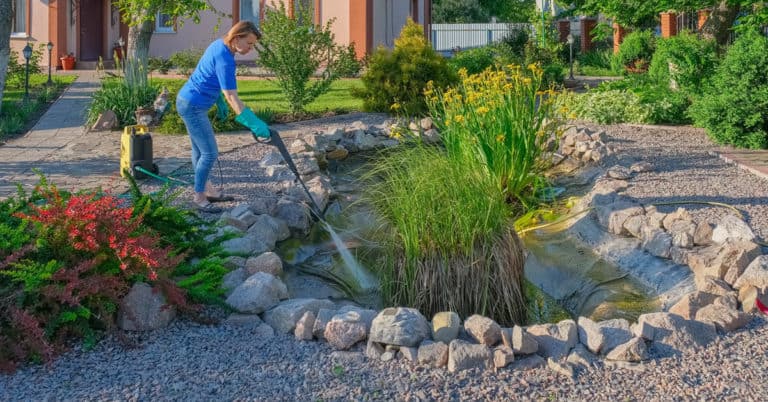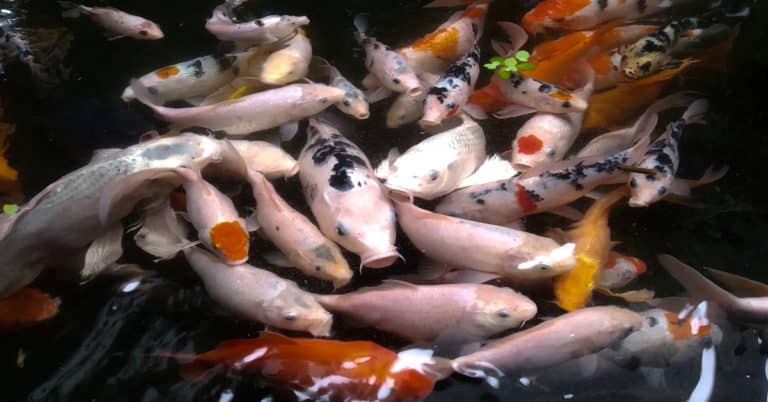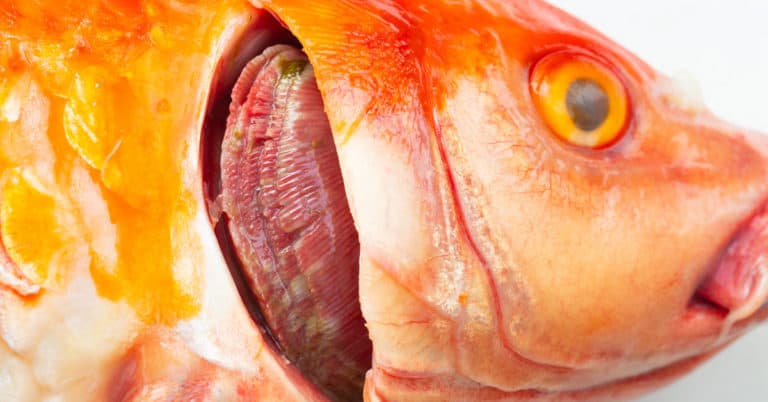Koi ponds can be exquisite focal points of any yard or business when adequately cared for and maintained. There is so much you can do with a pond aside from housing gorgeous, colorful Koi fish.

Adding water lilies to your Koi pond is one easy way to add some natural beauty. Tropical water lilies have stunning flowers, while hardy water lilies last through the winter. Lilies also come with many benefits, so it’s a great idea all around.
However, as a first-time koi pond owner, you might not know the ins and outs of how to plant water lilies in a Koi pond. That’s why we’re here to show you how to master this aquatic plant.
If you don't want to deal with the mess of planting your own lilies, you can always check out our koi pond services providers page. Here, you'll find local pros who can help you to select the right plants and install them in your koi pond.
Water lilies tend to flourish once planted, but the initial process can take a bit of work. Follow these steps to plant water lilies in your Koi pond successfully.

Even though your water lilies will live in the water, they still need to be planted in a planting container. The best container for water lilies is one that is shallow and wide.
Aim to find a container about 10 inches deep with a diameter of 12 to 18 inches. You can look for a water lily container at your local gardening center, but many people have found success using large, plastic ice cream tubs that have been cleaned out.
Once you have your container, you can fill it with suitable soil. When it comes to planting water lilies, the heavier the soil, the better. Your soil will be submerged in the water, so it’s essential to avoid any components that will float, such as moss or vermiculite.

Typically, generic garden soil will work well for this project. Do not use potting soil, as it’s too lightweight for use in the water and has materials that can contribute to algae and bacteria growth. Heavy clay soil works well for ponds with fish, too.
In addition to soil, you’re also going to need sand, gravel, and rock. These materials will form the top layer of the soil. It’s best to use a fist-sized stone along with a rivet rock, which will prevent fish from uprooting the water plants.
The potting process is slightly different for water lilies than other plants, so pay close attention here.
When you pot a water lily, you will most likely be working with water lily tubers or rhizomes. These are the young sprouts of a water lily. Here’s how to plant them.

Once you’ve done this, your water lilies are ready to go.
Before you submerge your planter, consider wetting the soil. Doing so can help compact it more and lessen the chance of the soil leaking into the water during the process.
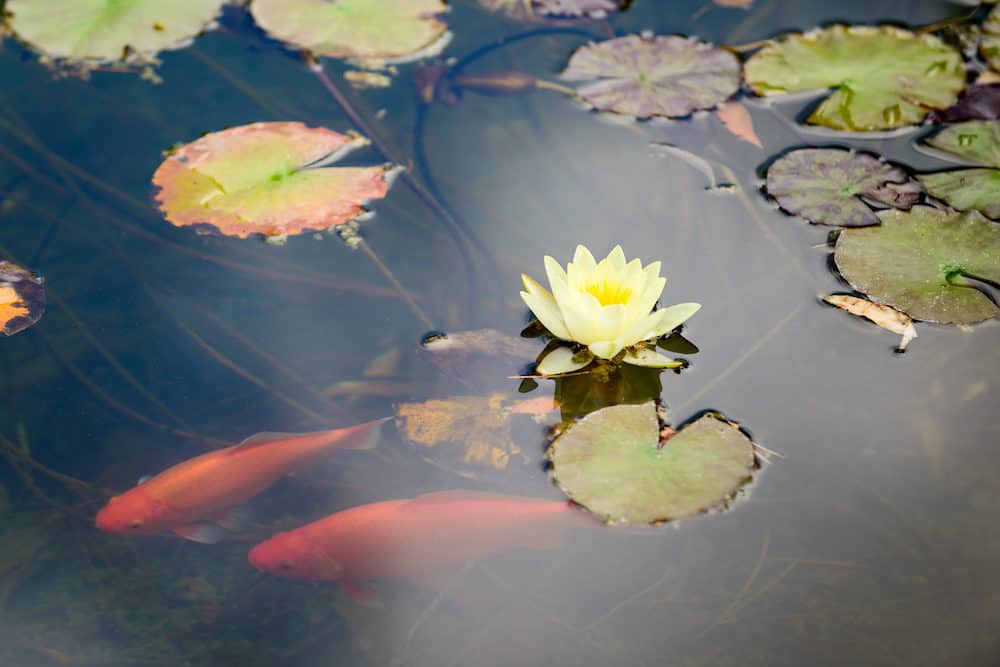
Do not submerge your planter lower than 18 inches. If your garden pond is deeper than that, you can create a shelf using rocks at the bottom of the pond.
Slowly submerge the container into the water at an angle to allow air bubbles to escape. Gently place the planter on the bottom or a shelf of rocks. This area is where your planter will remain as your lily plants grow to the surface.
As we mentioned above, your water lilies should never cover the entire surface of your pond. It’s best to aim for 60 to 65 percent surface coverage.
Your water lilies will produce and shed leaves, so be sure to always clean dead leaves from the surface of your lily pond. Not only will it look nicer, but you’ll avoid the bacteria that comes with rotting foliage.
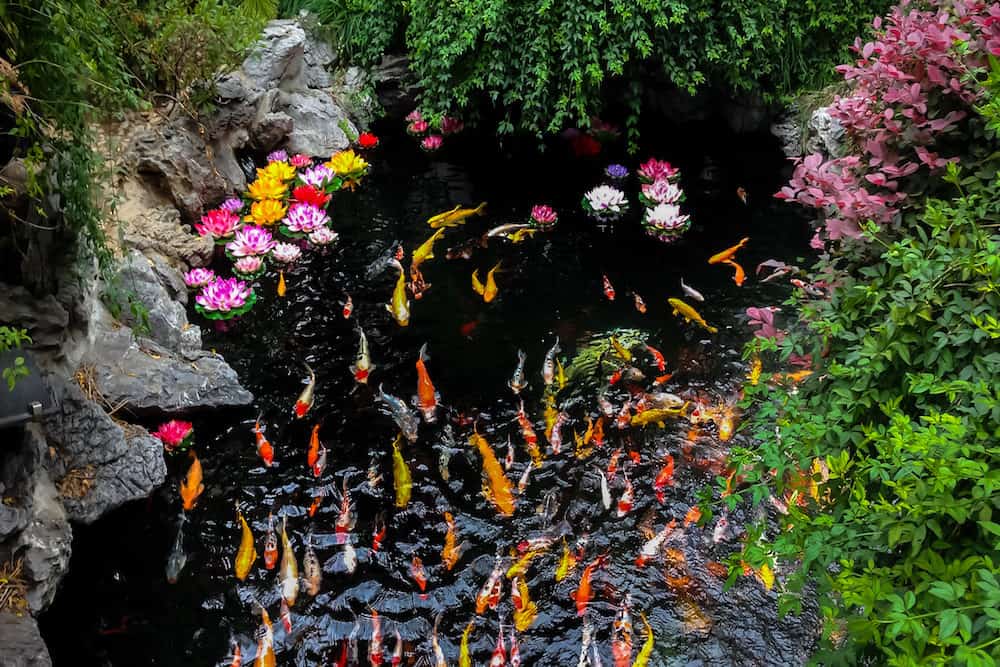
While your water lilies will do a pretty good job of self-maintaining, it’s a good idea to use maintenance tabs to add beneficial bacteria and enzymes to your water. These tabs are safe for your fish and can keep your water clean and healthy.
If your lilies are becoming too dense, use pruning shears to cut them back. You can also scoop them out from the soil by hand to remove a plant altogether.
Remember, it’s easier to maintain your lilies and cut them back in little bits at a time than to tackle a significant problem, so be sure to keep up with the pond maintenance.
It’s common for ponds of all kinds to have rocks, whether they sit at the bottom or form a shelf around the edge. While many stones look the same, some are better suited for ponds, as others aren’t good for the pH levels.
You may be tempted to grab rocks from your yard to use around your lilies, but that’s not always the wisest choice. Most garden centers sell stones designed for use in ponds, meaning they are safe for your fish.
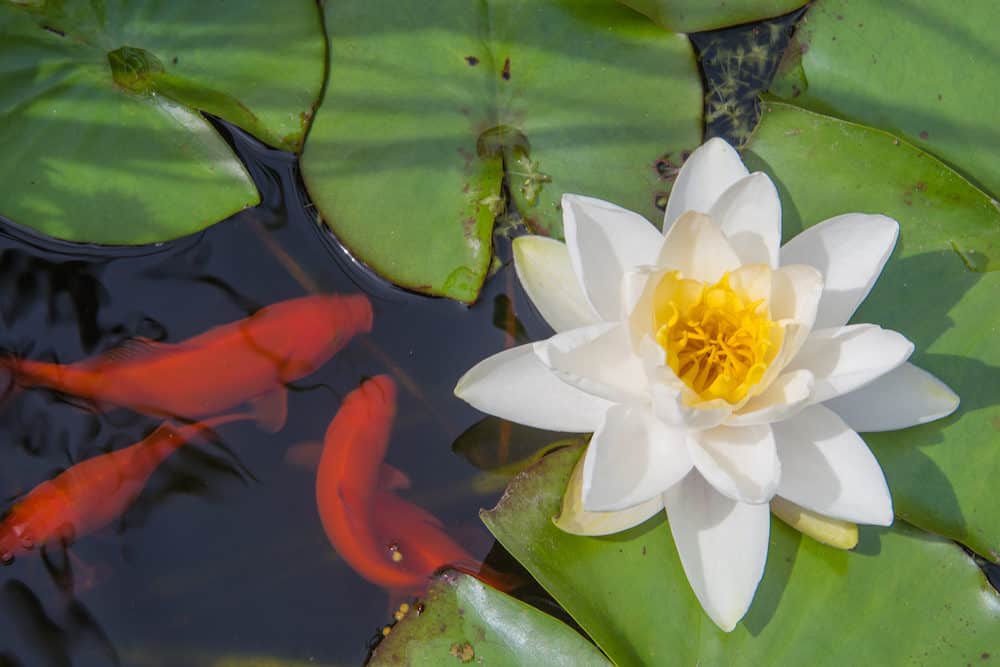
In general, though, you can expect granite, sandstone, and slate to be safe stone options for both your fish and plants.
One type of rock you should always avoid is limestone. Limestone can change the pH of your water, which can harm any plants or animals that are not accustomed to the change.
Regardless of what kind of rocks you choose or where you get them, be sure to wash them thoroughly before putting them in or around your pond. Make sure they’re clean of any bacteria or moss growth, as these can infest your water.
Remember that smooth, slick stones are best for in the water, while rough and jagged rocks are better for edging where they can’t damage your lining or harm your fish. Smooth stones are slippery and can be dangerous to leave on the edge of a pond - especially if you have young children around.
Check out some of these helpful FAQs below for more information on growing water lilies.
Water lilies multiply quickly. You can expect them to start growing about two weeks after you plant them. In another two to four weeks, you may begin to see pads and flowers blooming on the water.
Water lilies are perennials, which means that they will grow back every year with you having to replace the plants. They’re hardy plants, so they can withstand long, cold winter seasons.
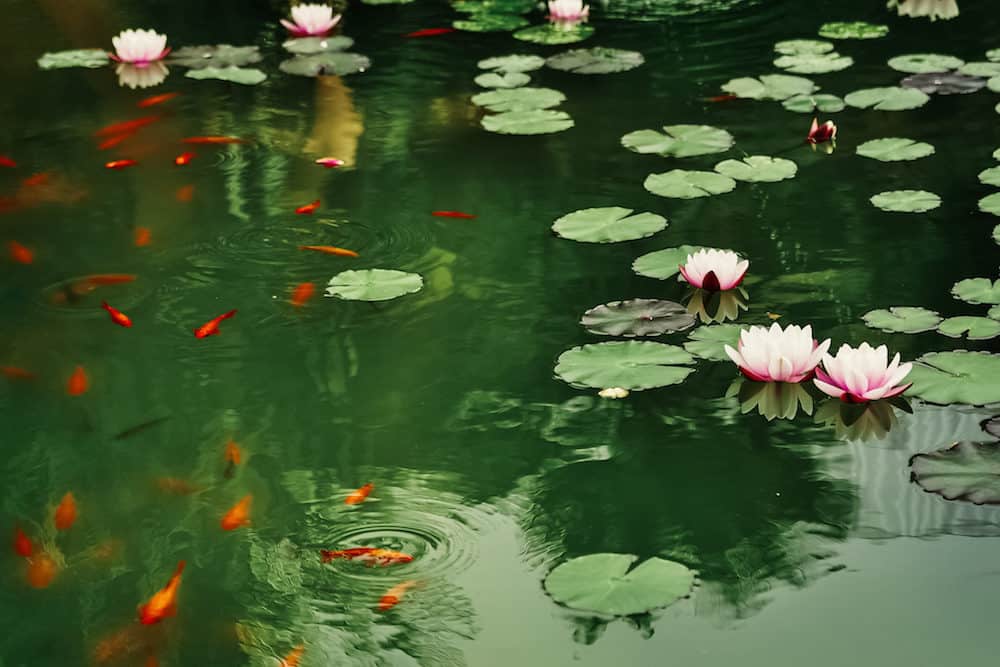
Water lilies have several benefits that make them excellent pond plants to grow.
Water lilies are beautiful and make stunning decorations for your pond. Their flowers bloom in pink, white, and yellow shades, and they float perfectly at the surface as delicate ornaments.
Lily pads also provide a superior level of shade for your Koi fish. If a Koi fish gets too hot, it will look for shade in the water. A lily pad is a perfect place for your fish to keep cool during hot summer days.
And finally, these aquatic pond plants act as very powerful purifiers. So powerful that many fish farmers keep them in their farms to improve the water quality for their fish to thrive. Lilies clean the water by absorbing nutrients along with heavy and poisonous metals.
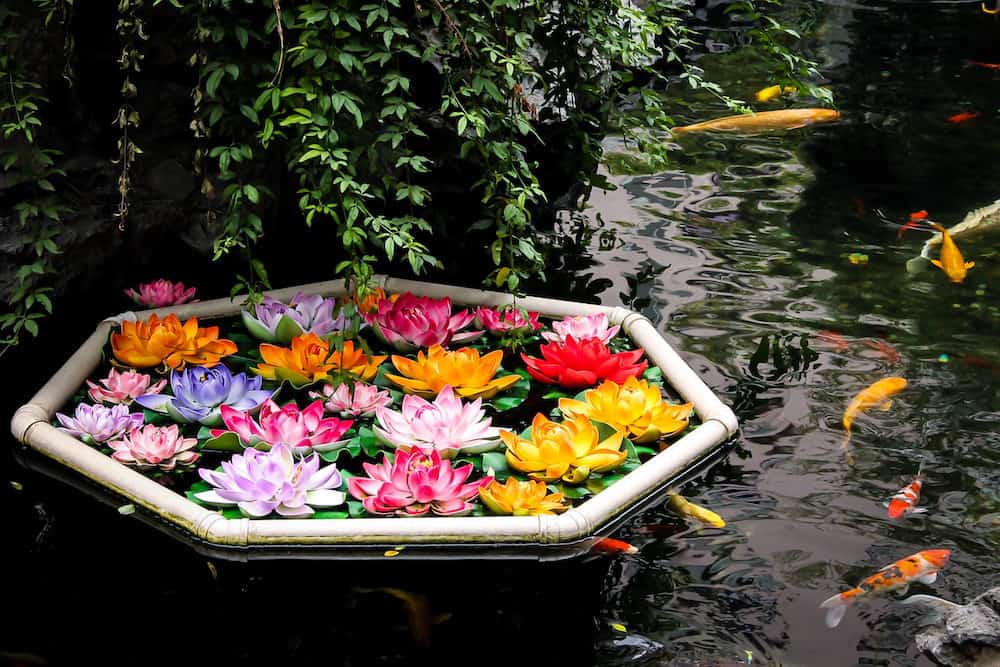
While the plants themselves are not harmful to Koi fish, water lilies can pose some danger to your fish if you do not properly maintain them.
Water lilies that grow too much and too quickly can cover the surface of your pond. When this happens, sunlight cannot get through to your fish or other plants beneath the surface.
Koi fish can die if they don’t get enough sunlight, so it’s a good idea never to have your water lilies cover more than 60 to 65 percent of the pond’s surface.
Water lilies, whether tropical or hardy, are simply beautiful plants that can serve to complete the look of your backyard oasis. They float daintily on the water and make excellent ornamental pieces.
Water lilies also have several benefits, such as purifying your pond’s water and providing shade for your Koi fish.
But water lilies can quickly grow out of hand, so you must maintain and trim them regularly. Otherwise, they’re easy to plant, simple to grow, and their bright flowers look amazing on your water.

